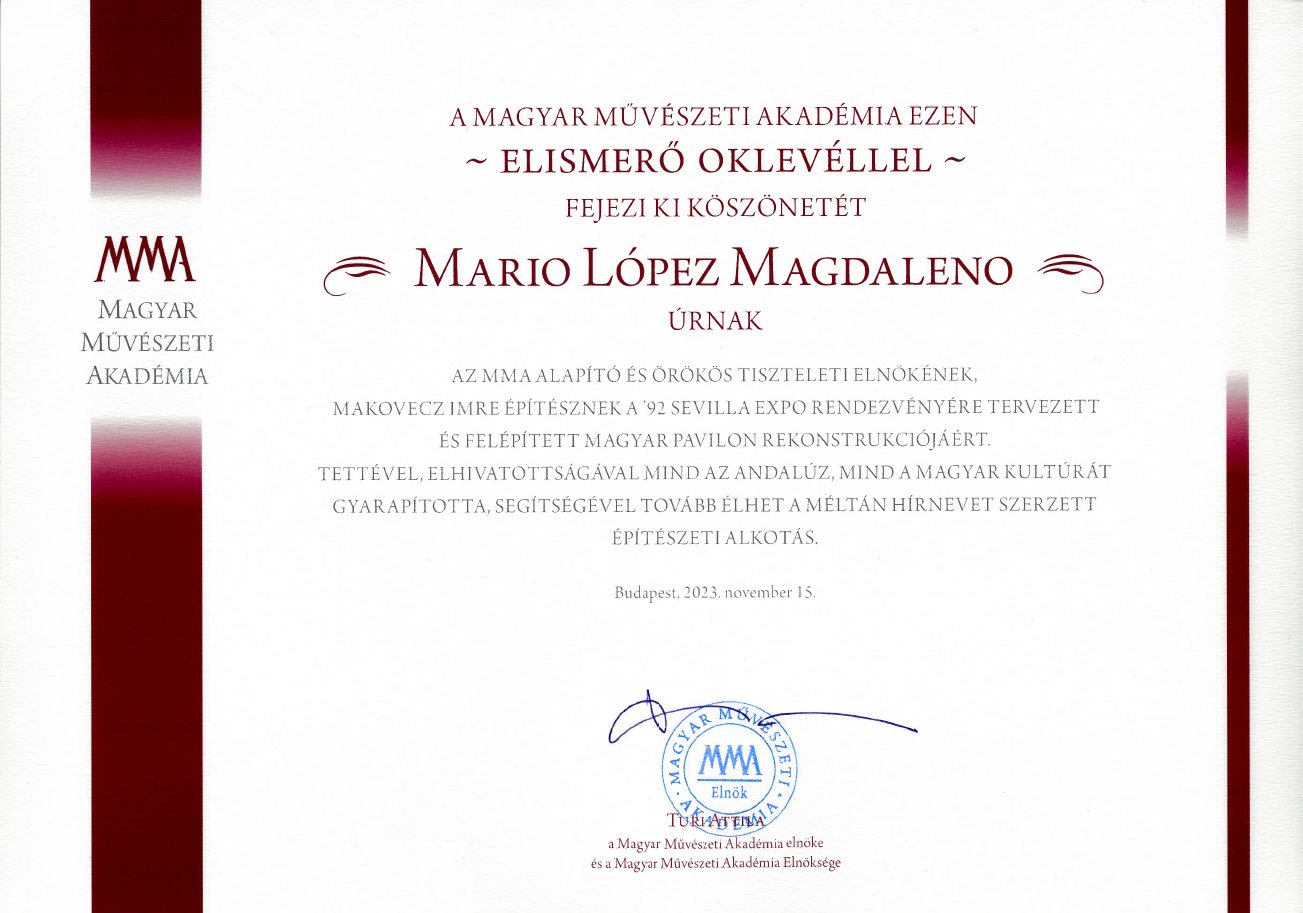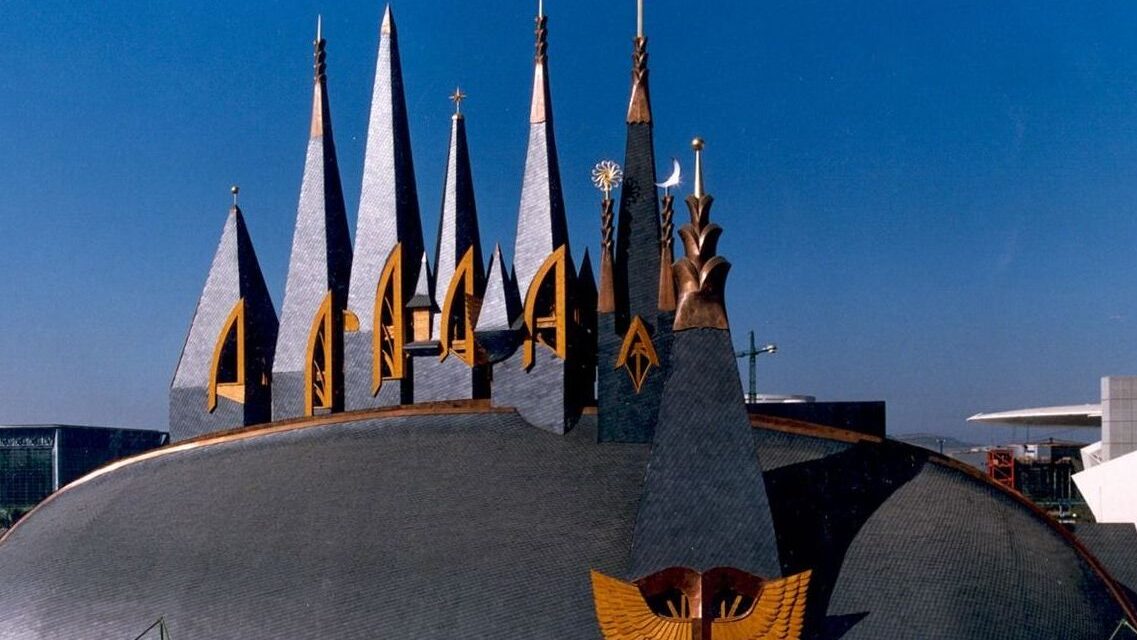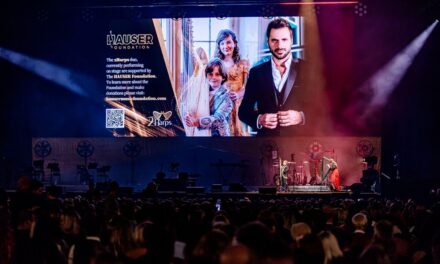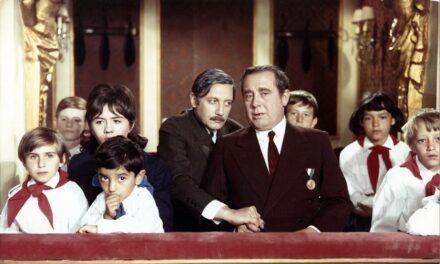The Hungarian Academy of Arts (MMA) expressed its gratitude to Mario López Magdaleno, CEO of Magtel, for saving the Hungarian Pavilion designed by Imre Makovecz at the 1992 World Exhibition in Seville.
The Spanish business specialist bought the building dreamed up by the founder and honorary president of the MMA, but in a severely deteriorated condition over the past years, thereby ensuring the complete reconstruction of the Hungarian Pavilion within a short period of time.
The Hungarian Pavilion at the 1992 World Exhibition in Seville has a special significance in the fabric of our national culture
- stated Attila Turi, president of the MMA, in his letter to Mario López Magdaleno.
Imre Makovecz, the architect who received numerous international recognitions - partly for the construction of this building - in the 20th century. He was the most influential Hungarian architect of the end of the century, treating national and European culture in context. During the peculiar period of the political system change and the collapse of the bipolar world, he was commissioned by the Hungarian government to design the national pavilion for the World Exhibition in Seville.

Source: MMA
As proof of their special attention, the Spanish organizers gave the Central European countries of the "Eastern Bloc" the opportunity to build an independent building, thereby expressing and acknowledging their - and thus Hungary's - belonging to Europe.
Imre Makovecz was entrusted with the extraordinary opportunity - not only the planning, but also the entire construction - by the first democratically elected civil government of Hungary after the change of regime, because it saw the manifestation of our specific culture in this architectural concept - he emphasized in his letter on the occasion of awarding the certificate of recognition president of the MMA.
Expressing his personal joy, Attila Turi recalled that as an architect and technical manager, he could have been one of the participants in the realization of the pavilion - together with academician Lőrinc Csernyus.
Imre Makovecz's building won respect and recognition from both the EXPO authorities and the world public. In 1992, the building was visited - then still as the Prince of Wales - III. King Charles of England, who praised the work done there with words of appreciation.
Imre Makovecz's building was considered a special cultural value by the Andalusian cultural government and the profession - unlike the several temporary pavilions on Cartuja Island, the site of the World Exhibition in Seville. After the closing of Expo'92, an investor group once bought and then sold the building, but the planned cultural center could not be realized due to financial problems. With Mario López Magdaleno's current decision, he ensured the long-term survival and reconstruction of the building and created the possibility of its use worthy of its art historical importance.
Featured image: The Hungarian pavilion designed by Imre Makovecz at the 1992 World Exhibition in Seville (Source: Imre Makovecz Foundation)













